How to Jump Start a Car with Jumper Leads
Overview
If you have a flat battery, starting your car can be next to impossible. With a set of jumper cables and a good Samaritan on hand however, you can be back up and running in no time at all.
Late model cars are generally more dependent on complex electronics to function and any voltage spike can damage the delicate electronic circuitry. Quality jumper leads fitted with a 'spike guard' or 'surge protector' should always be used and are available online or from any Supercheap Auto store.
NOTE: If the vehicle will not start, the charge indicator shows a fault or the alternator light is on, you should stop what you are doing immediately and contact your local auto club or local mechanic. In these circumstances the issue may not be battery related.
If you're looking to jump start a car with a Jump Starter pack, check out the how to jump start with a jump starter article Click Here.
Will Jump Starting my Car Damage the Electronics?
Jump starting a car could potentially damage sensitive electronics, but only if it is not done correctly, or those electronics aren’t correctly wired up in the first place. Usually, and provided that you follow the correct procedure, there is absolutely no risk to either vehicle when jumpstarting a car. The most likely damage caused if the cables are reversed or connected wrong, is to your car’s fuses. High quality jumper cables, and modern cars themselves are usually built with surge protection, so you only really run the risk of blowing fuses. It is still important to be careful and to ensure that you don’t allow live cables to touch anything they shouldn’t.
Can a Car Battery Be Too Dead to Jump Start?
Unfortunately, sometimes a car battery can get so dead that it simply can’t be jump started anymore. Often a “dead” battery will still discharge power, it just won’t be able to reach the standard 12-volt range and so won’t be able to turn over your car. Check for excess buildup around the terminal posts, leaks, spillage, swelling or overall corrosion as these are often signs of a battery that is too far gone to jump start. If it is unable to be jump started or even recharged, then it is time to recycle your old battery at your nearest Supercheap Auto - absolutely free of charge (no pun intended.)
Why Don't You Connect the Negative When Jumping a Car?
When you hook up a set of cables to jump start a car you should never connect the black cable to the negative terminal on the old battery. You don’t actually need to, since the circuit will still be completed when you connect the cable to ground - but the reason it isn’t recommended is because batteries can omit volatile gases. These gases are often highly flammable and any sparks from a connected battery could cause an explosion or fire risk.
Connect the positive at the battery terminal first (there is no danger of a spark as a complete circuit is not formed) then connect the negative cable to a point on the chassis or engine, away from the battery, so the resulting spark is not in the area likely to be affected by any gases.
Does Giving a Jump Drain Your Battery?
Anything your battery does drains your battery, however as long as it doesn’t fall below operational voltages, your battery should be more than capable of jump starting another car. If your vehicle is running, the power you are sending through to the flat battery is actually being generated by your alternator so you’ll usually find that your battery’s voltage won’t really change at all.
How Long Should You Drive After Jumping a Car?
As mentioned, you should drive your car for at least 30 minutes after jump starting it, in order to give your alternator enough time to fully recharge your battery. The alternative to this is if you have a battery charger at home and can simply drive home to charge your battery there.
Steps
Connect the Red Lead
With all precautions checked, connect the red coloured jumper lead to the (+) positive terminal of the flat battery and the other end of the red jumper lead to the (+) positive terminal of the charged battery.
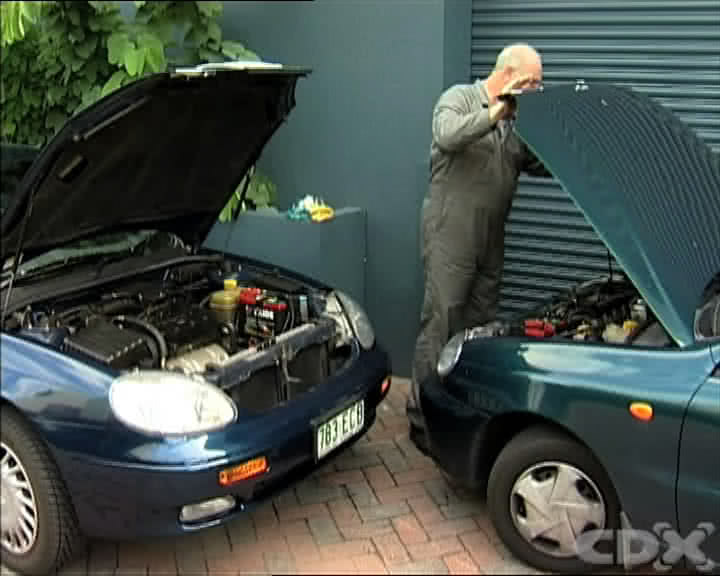
Connect the Black Lead
Connect the black jumper lead to the (-) negative terminal of the charged battery and the other end of the black jumper lead to a good earth point (solid metal component of the engine) on the disabled vehicle.
DO NOT connect the black cable to the negative terminal on the discharged battery as this may cause a dangerous spark.
The engine block is typically the best place for a good earth.
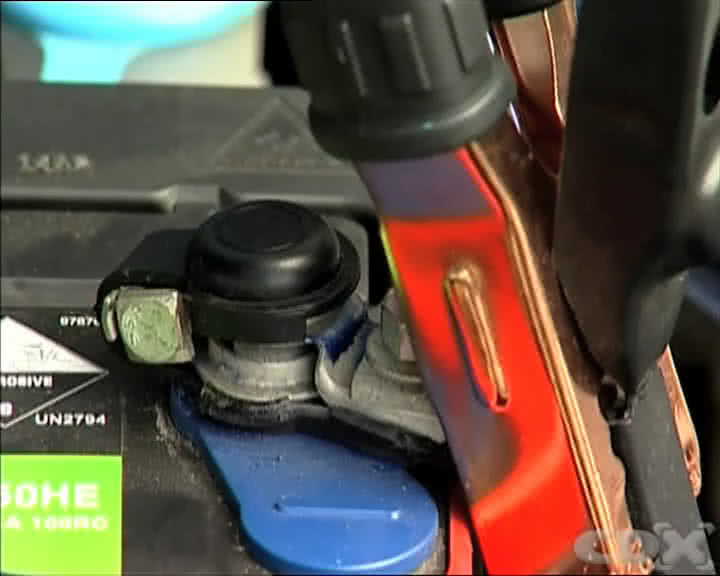
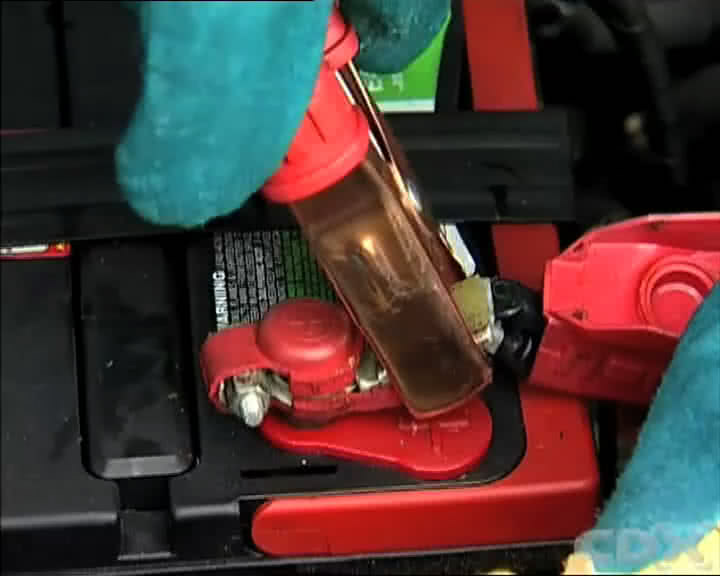
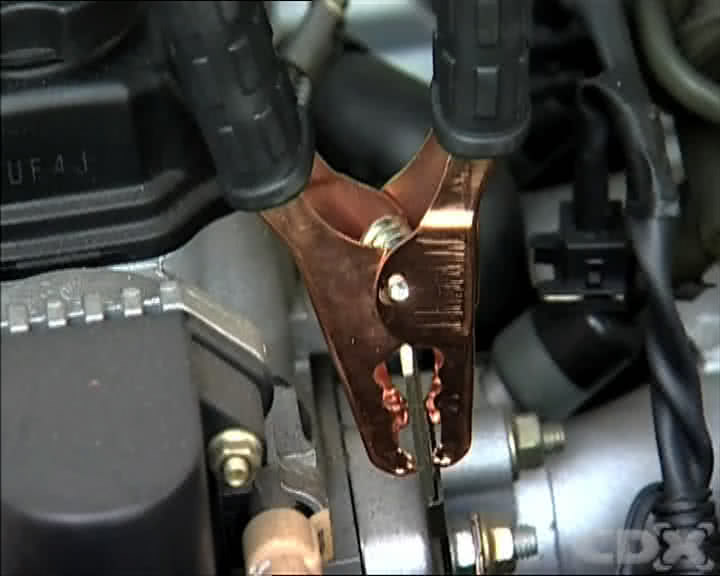
Attempt the Jump
Attempt to start the engine with the flat battery.
If the charged battery doesn’t have enough capacity to do this, start the engine with the charged battery and try it again. The vehicle should now start.
Let the vehicle with the previously flat battery idle with the headlights on to prevent a possible voltage spike, damaging electrical equipment.
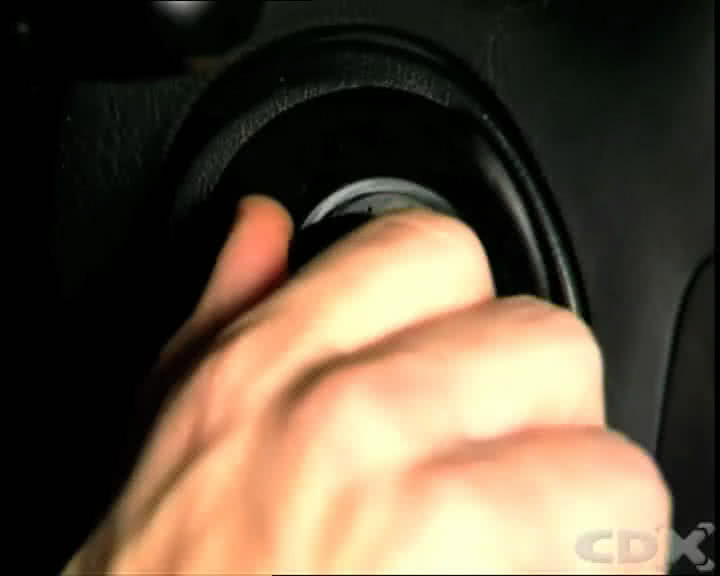
Disconnect the Jumper Leads
Disconnect the jumper leads in the reverse order of connection. Remove the black negative lead from the ground, then from the donor vehicle.
Then remove the red cable from the already charged battery and lastly disconnect the red positive cable from the vehicle you have just started
The car has now been started and after any caps and covers have been replaced it is ready to be driven. If the charging system is working correctly and the battery is in good condition the battery will be recharged whilst the car is running.
Drive the vehicle for 30-40 minutes to recharge the vehicle battery. Unless the cause of the flat battery is known, for example lights left on, the battery and electrical system condition should be checked for problems and rectified as soon as possible.
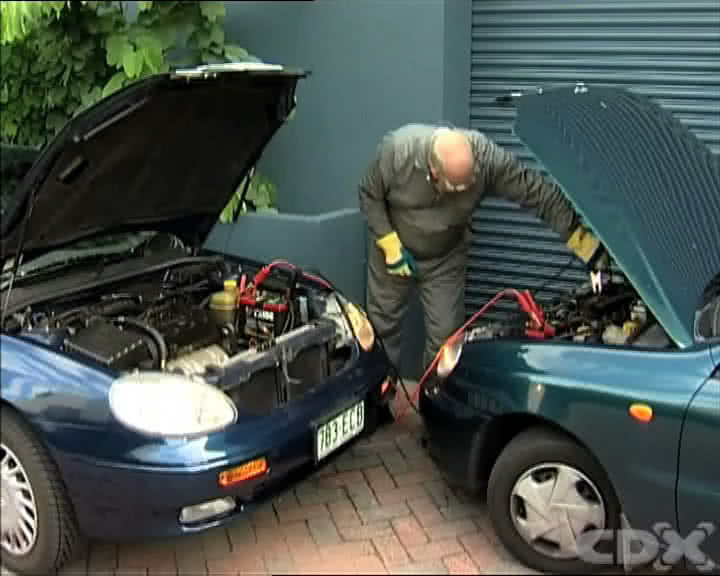
Tips
- Ensure the ignition switch is in the OFF position on both vehicles
- Turn off the lights and power draining functions (such as the stereo and interior light) to help ease the strain off the donor battery
- Ensure the donor battery is the same voltage as the flat battery
- Ensure the two vehicles are not touching in anyway
- Make sure the vehicles are in either Neutral (Manual) or Park (Auto) with the handbrake on
- Remove any vent caps on non-maintenance free batteries – be very careful as battery acid is highly corrosive
- Only run the engine in a well-ventilated area to ensure toxic exhaust gas does not build up
- Don't leave either engine running unattended
*Important information* - Click here to read more about our DIY Advice Terms and Conditions.